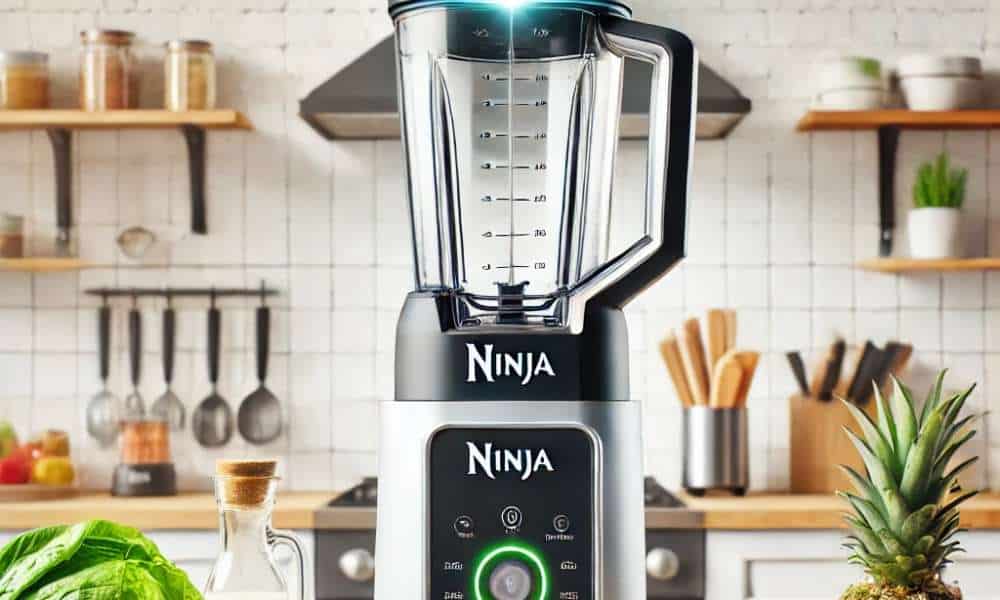In the midst of your culinary adventure, a blinking light on your Ninja blender might feel like a frustrating roadblock. This issue is a common occurrence for many owners and, thankfully, is often easy to diagnose and fix. Understanding why this light blinks is more than just solving a fleeting inconvenience—it’s about maintaining the efficiency and longevity of your appliance. By learning to interpret these signals, you can save time, avoid frustration, and ensure that your blender continues to perform flawlessly.
Understanding the Blinking Light
The blinking light on a Ninja blender isn’t a random quirk; it’s a built-in safety and diagnostic feature. At its core, this signal serves to protect the appliance and user, warning of potential operational issues. Instead of being a harbinger of mechanical failure, the blinking light often prompts simple troubleshooting steps. Whether it’s alerting you to improper assembly or signaling overheating, this feature ensures the blender functions as intended, reducing the risk of damage or injury.
Common Causes of Blinking Lights
Power Issues
One of the most straightforward reasons for the blinking light is a disruption in power. A loose plug or a fluctuating power source can trigger the warning, causing the blender to halt operation until the issue is resolved. This safeguard ensures consistent energy delivery during blending.
Incorrectly Assembled Parts
Your Ninja blender is meticulously designed to operate only when all components are properly aligned. Misplaced lids, improperly attached pitchers, or loosely secured cups can all result in the blinking light. This failsafe prevents mishaps during operation.
Overheating
Overheating is another common culprit. Extended blending sessions or overloading the pitcher with ingredients can strain the motor, causing the light to blink. This feature acts as a warning to let the motor cool, preventing long-term damage.
Troubleshooting Power Issues
Begin by ensuring the blender is firmly plugged into a functional outlet. Check if other devices are experiencing similar power issues; if so, it may indicate a broader electrical problem. Inspect the cord for signs of wear or damage that might impede the connection. A simple adjustment or securing the plug can often resolve this issue and get the blender operational again.
Correct Assembly Checks
Before you press the blend button, take a moment to double-check the assembly of your Ninja blender. Ensure the pitcher, blade assembly, and lid are securely locked in place. Many models feature alignment indicators—use these to guide you. Even a slight misalignment can activate the blinking light. Pay extra attention to the base’s connection with the pitcher, as a loose fit can interrupt the blending process.
Addressing Overheating Problems
Overheating is the Ninja blender’s way of signaling that it needs a break. Allow the motor to cool for at least 15–20 minutes before attempting to restart. Avoid overfilling the pitcher; exceeding the maximum fill line can place undue strain on the motor. Additionally, use short blending bursts for tougher ingredients to minimize prolonged operation and prevent heat build-up.
Maintaining Your Ninja Blender
Proper maintenance is key to extending the life of your blender. Regularly clean all components after each use to prevent residue from building up and affecting performance. Inspect the blades, seals, and other moving parts for wear and tear, replacing them as necessary. Keep the motor base free of dust and debris, as these can compromise its functionality.
Blending Tips and Tricks
For optimal performance, begin with smaller ingredient quantities and gradually increase them as needed. Avoid hard, frozen items without pre-chopping or adding liquid. This not only prevents motor strain but also ensures smoother blends. Experiment with recipes that are both easy on the blender and creatively delicious, such as fruit smoothies, soups, or nut butters.
When to Seek Professional Help
If the blinking persists despite troubleshooting, it may indicate an underlying mechanical issue. Reach out to Ninja’s customer service for guidance or consult online resources such as user manuals or video tutorials. Persistent problems may require professional repairs to avoid voiding the warranty or causing further damage.
Conclusion
The blinking light on your Ninja blender is more than a nuisance—it’s a reminder to engage in mindful appliance care. By understanding its causes, implementing effective troubleshooting steps, and maintaining your blender regularly, you can prevent future disruptions and enhance its lifespan. Troubleshooting kitchen appliances is a skill every modern cook should embrace, turning challenges into opportunities to master their tools. With a little care and attention, your Ninja blender will remain a reliable companion in all your culinary endeavors.
